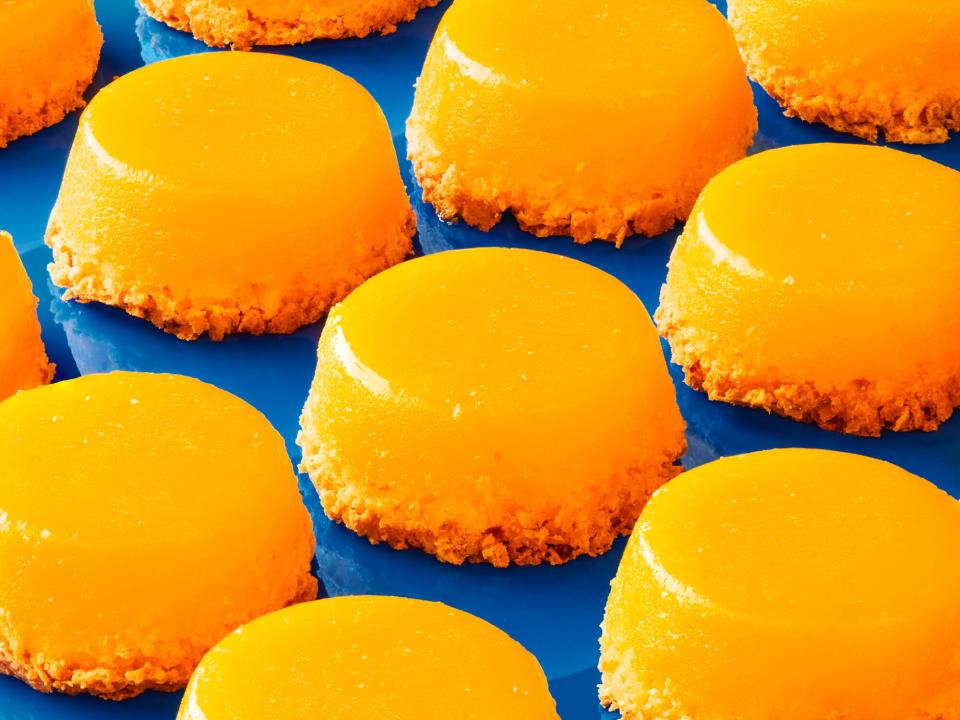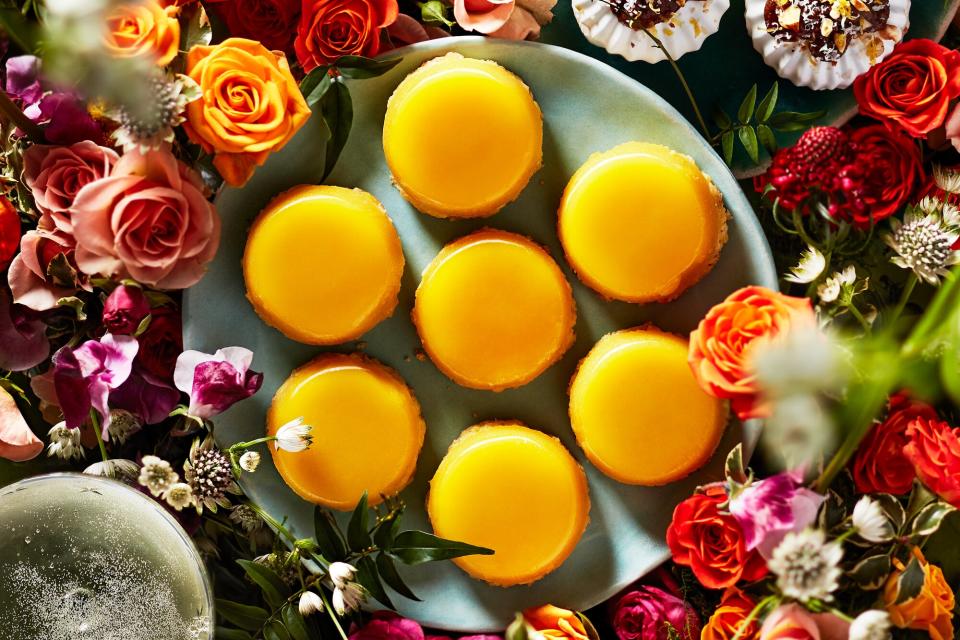How a Legendary Food Historian Eats Her Way Around the World
I was destined to be a traveler. The die was cast before I was born, almost a century ago in a schoolroom in Plainfield, New Jersey, with one harsh sentence in my mother's French class: "Rhoda, sit down. Negroes cannot speak French; their lips are too large!" The unnecessary vitriol spewed at an adolescent Black girl in the 1920s fixed my life's trajectory, as my mother vowed that if she were to have children, they would speak French. I do, with the vocabulary and the ease of one who has a licence ès lettres from a major university in France and a mimic's ear for language. The acquisition of a second language in the 1950s and '60s was a rare thing for most Americans and rarer still for Black Americans. That, along with the ability to connect with other cultures, which I learned from attending the United Nations International School in New York City, gave me a driving need for travel and exploration.
My childhood home was near Idlewild Airport (now JFK). In those days, observation decks allowed folks to watch the planes take off, and a trip to the airport was a frequent Sunday excursion for my family. I would always return home vowing to bring a suitcase the next time. The family joke when I was an adult was that once I did bring a suitcase, I never stopped bringing one, as I have been in the air ever since.

Photo by Greg DuPree / Food Styling by Torie Cox / Prop Styling by Audrey Davis
While my first trip outside of the United States was to Quebec, my first solo trip was to Paris. As I boarded the plane, my mother took me aside and said, "You will be forever changed." She was so right. That junior year abroad in the late 1960s was the perfect opportunity not just to fine-tune my French, but also to hone my traveler's chops. I took courses at the Louvre and found my way to French onion soup and a grilled pig's foot at Les Halles, "the belly of Paris," which back then still existed as it had in Victor Hugo's day. (It was demolished in 1971.)
[Paris] showed me how to be a wanderer: how to stop to savor the small things that can make all of the difference in a trip.
I sought out small neighborhood restaurants where regulars kept their large cloth napkins in cubbyholes and other diners got paper ones. I discovered Alsatian choucroute garnie, and the cabbage-and-wurst dish became a Parisian must-have. I spent the night on Mont-Saint-Michel, where the fluffy omelette de la mère Poulard cooked over a wood fire was a revelation. I toured the caves in Champagne and discovered the joys of red wine. Paris cemented in me an instinct to try to meet others on their territory and find common ground. It also showed me how to be a wanderer: how to stop to savor the small things that can make all of the difference in a trip, like the café across from the park where the croissants were extra flaky and the cat would visit for a corner of one. I also learned to make a place mine on my travels by visiting it often enough to be recognized by the employees. It taught me to be a traveler, not a tourist. Those skills would stand me in good stead in other parts of the world as my explorations widened.
The African continent beckoned me in the 1970s, when thoughts of Black power and nation building were uppermost in many minds. A trip to research my dissertation was the catalyst that would mark the rest of my life. The first stop was Dakar, Senegal, a place that still haunts me. There, market women in flowing boubous sauntered along sandy streets, and I felt the palpable thrill of being in a newly independent country where the president and government higher-ups looked like me. A stay at the Hôtel de la Croix du Sud established my growing love for the country. The food cemented it; at the hotel, I could indulge in the tastes of France, while the food that I tasted in the company of newly made friends—the dense tomato-hued fish-and-rice stew called thieboudienne, the lemon-inflected chicken yassa—combined the flavors of home with the savors of a different, unexplored culinary world.
I discovered Benin on that same trip, but Cotonou, the largest city, was a quiet backwater with none of the panache of Dakar. What it did have was a family that has become my family, markets that still make me marvel, and food that has defined my career. In Benin, I tasted foods that more closely resembled those of the American South—slow-cooked leafy greens, fermented grains cooked into porridges, richly flavored stews, and okra galore.
The list of foods where I tasted culinary connections grew as my travels took me farther afield. I was a full-time professor. My side hustle as a travel journalist connected me with the African Atlantic world. I found myself in such far-flung spots as Kenya and South Africa, Morocco and Mexico. And every major island and most minor ones in the Caribbean. (I've even been to Carriacou!) I knew less of South America, but once I made my way there, my soul was captured by Brazil.

Photo by Eva Kolenko / Food Styling by Marian Cooper Cairns / Prop Styling by Natasha Kolenko
At the end of the 1970s, Salvador, the capital of Brazil's eastern state of Bahia, was a city in transition. While there was a growing tourism market, the area of the old city surrounding Pelourinho, the pillory square in the center of the old town, was downright dangerous after dark and certainly no place for a solo female traveler. But there, I discovered the Cantina da Lua, a hangout for artists and locals of all stripes, where owner Clarindo Silva read poetry over a loudspeaker every night at midnight. The grit was, for me, a part of the charm and the fascination. This was the Bahia in which the works of novelist Jorge Amado, whom I would later meet, came alive before my eyes. Was that Dona Flor who just disappeared around the corner, or was the disheveled man stumbling out of the bar Quincas Wateryell? It was a mysterious and magnificent mix of everywhere else I'd been in the African Atlantic world and yet its very own place.
The fact that the traditional food of Bahia evolved from ritual dishes that the enslaved votaries served to the African deities they remembered from their distant homelands was also a revelation. I discovered Africa in the New World in Salvador. From street vendors selling black-eyed-pea fritters like those I knew from West Africa to the sugarcane-based cachaça that had hints of Southern moonshine, this was a world that combined Africa, the Caribbean, and the traditions that I knew from my grandmothers. Surprisingly, while Bahia's crisp, savory fritters and fish stews redolent of the red palm oil called dendê were culinary revelations, the Bahian dish that has remained most vibrantly alive for me is one that owes as much to Portuguese convents as to West African temples: quindim, a combination of macaroon and flan. The delicious conjoining of sugar and coconut that is served up on street corners by women whose dress inspired Carmen Miranda encapsulates all of Salvador's history for me.
My life has been as full of memories created in other lands as my passport is filled with stamps.
I have other favorite spots, each with its own personality and its own food. Take Guadeloupe and Barbados and Jamaica—places in the Caribbean where I am more at home than when I am at home—and new discoveries like Beijing, Shanghai, and Shenyang, in China, where I ventured for the first time in 2019. In my travels, I have created family for myself in the world: a Brazilian godson here, a Yoruba one there, and some close-as-sisters girlfriends in Benin, Bahia, and Beijing. I am as at home in the rambling marketplace in Cotonou as I am in the kitchen of a Candomblé house in Salvador da Bahia, Brazil. I've eaten at the Sabbath table of the chief rabbi of Nancy, France, and broken the Ramadan fast with friends in Marrakech, Morocco. My life has been as full of memories created in other lands as my passport is filled with stamps. As a result, my world of food is quite literally the world.
The pandemic has made me cool my jets and rest my feet at home for longer than I ever have in my adult life, but it has only served to remind me that as soon as it is again possible, I'm heading to an airport and taking off. For I've got itchy feet, and as long as I can haul a suitcase, I will always be a traveler.

